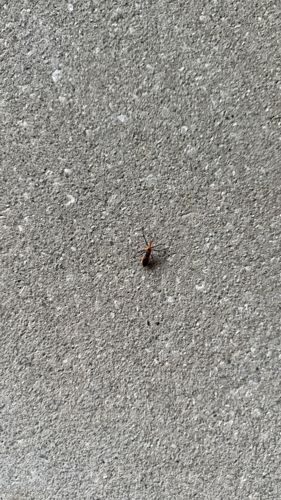Ant
Scientific Name: Formicidae
Order & Family: Hymenoptera, Formicidae
Size: Most ants range from 2 mm to 25 mm (0.07 to 1 inch) in length, depending on the species and caste.

Natural Habitat
Ants are found almost everywhere on land, from tropical rainforests to deserts, and even in urban environments. They typically live in colonies underground, in mounds, or within trees and decaying wood.
Diet & Feeding
Ants have a highly varied diet and are often omnivorous. They consume nectar, seeds, fungi, other insects, and sometimes scavenge on dead animals or human food waste. Their diet often depends on the specific species and what resources are available in their environment.
Behavior Patterns
Ants are highly social insects that live in structured colonies. They exhibit complex behaviors such as building elaborate nests, foraging for food, caring for their young, and defending their colony. Different castes (queens, workers, males) have specific roles within the colony. They communicate through chemical signals (pheromones) and tactile interactions.
Risks & Benefits
Risks: Some ant species can bite or sting, causing minor irritation or allergic reactions in sensitive individuals (e.g., fire ants). They can also become pests in homes, contaminating food. Benefits: Ants play a crucial role in ecosystems as decomposers, aerating soil, dispersing seeds, and acting as predators of other insects, thus helping to control pest populations.
Identified on: 10/21/2025